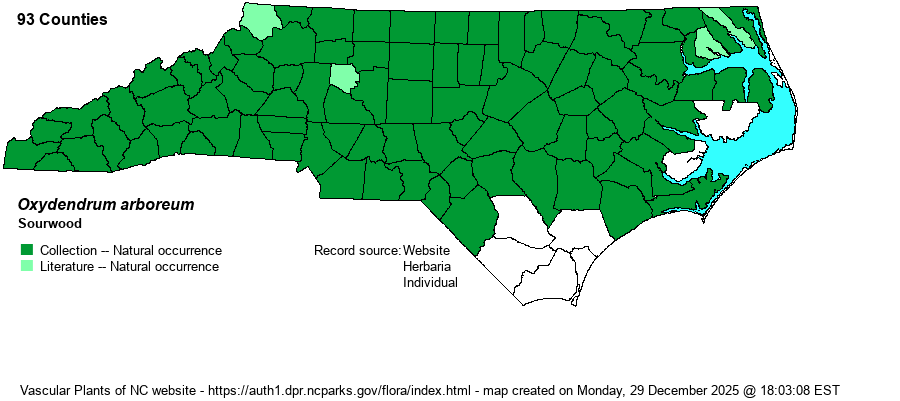| Author | (L.) de Candolle | |
| Distribution | Nearly throughout the state, but seemingly absent from the extreme southeastern corner of the state. Apparently no records for the five most southerly counties in the state.
The global range is centered on TN and NC. It ranges as far north as PA and southern IN, and south to western FL and LA. It is scarce to absent on the lower Coastal Plain of SC, GA, and most of FL.
| |
| Abundance | A common to often very common, and widespread, species, especially characteristic of the Piedmont and lower Mountains. | |
| Habitat | This species occurs in mesic to fairly dry upland oak-hickory or oak-pine forests, occasionally in drier parts of bottomlands, ecotones of uplands and pocosins in the Coastal Plain, and other mesic or moist soils (more so in the Coastal Plain). It is often found on bluffs, in rocky woods, and in other upland forests, but it is not numerous in sandy soil. |
| Phenology | Blooms in June and July; fruits in September and October. | |
| Identification | This is the only ericaceous species in the Southeast that is clearly a tree. The species is deciduous, of somewhat small to medium size, growing to about 40-50 feet, rarely to about 75 feet; trunks greater than about 1-foot dbh are not often seen. It is a characteristic understory tree wherever it grows, seldom to very rarely reaching the canopy. Its narrowly elliptic and entire leaves, long racemes of dangling urn-shaped white flowers at the tips of the branches, bark that is soft gray with furrow-like ridges, and often reddish twigs that have an unpleasant odor (when broken) are all helpful for identification. This tree should be familiar to all outdoor enthusiasts and should present few identification problems. | |
| Taxonomic Comments | This is the only species in the genus Oxydendrum.
| |
| Other Common Name(s) | Sorrel-tree | |
| State Rank | S5 | |
| Global Rank | G5 | |
| State Status | | |
| US Status | | |
| USACE-agcp | FACU link |
| USACE-emp | UPL link |

